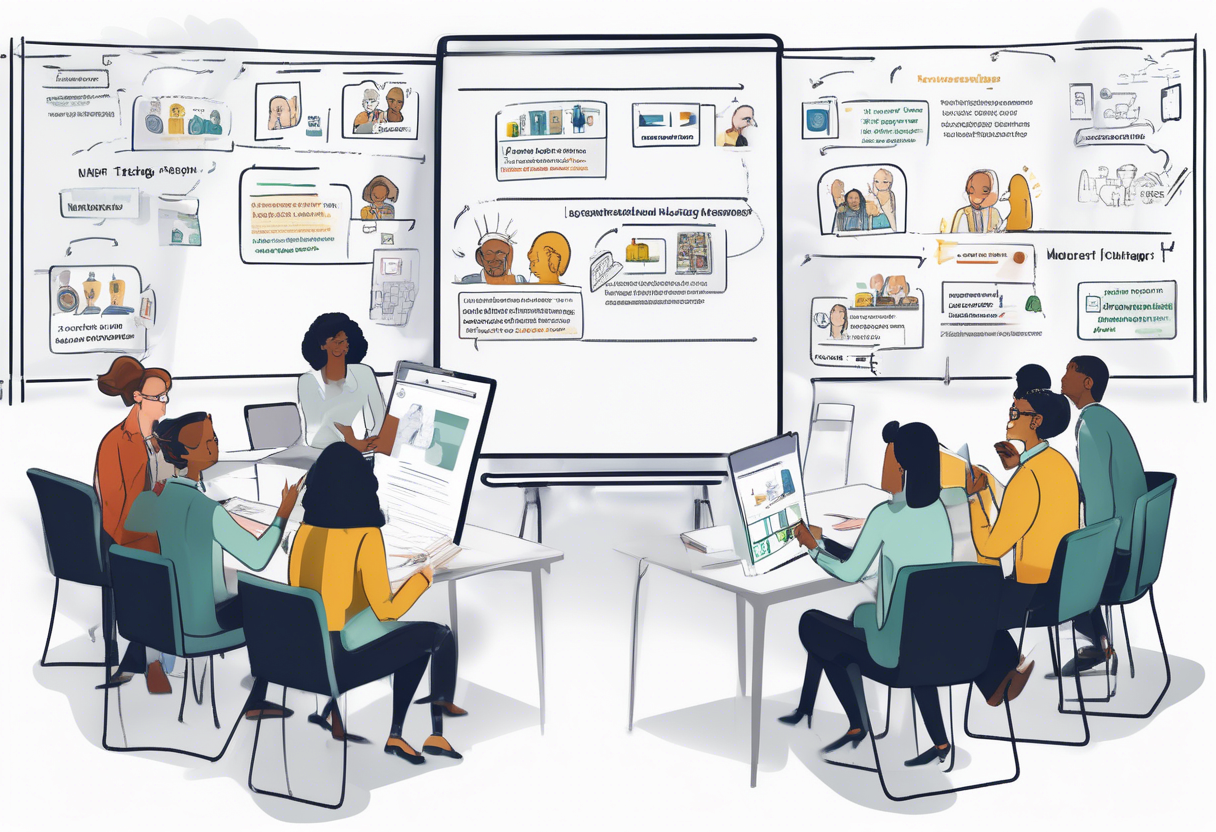
In business today, it's not just about who you have on your team right now. It's about growing leaders for tomorrow. Did you know companies with solid talent development plans are 33% more likely to beat their competitors? That's a big deal and shows why helping your team grow is so important. Here, we'll walk you through how to build a talent development framework that meets your current needs and preps you for the future. We'll cover everything from figuring out what your organization needs, to crafting personalized learning plans, and setting up a solid framework. We'll also talk about how to measure and tweak your efforts for ongoing improvement. Whether you're an HR pro or a business leader wanting to boost your team's skills, this guide will help you out. Let's get started on this together!
Assessing Organizational Needs and Skills Gaps in a Talent Development Framework
Conducting a Comprehensive Needs Analysis for Talent Development
A needs assessment is all about identifying the gaps between where your organization is currently and where it aims to be. It's the backbone of a talent development framework.
To conduct a needs assessment:
- Gather Data: Use surveys, skill tests, and HR metrics.
- Listen to People: Conduct interviews and focus groups to get a complete picture.
- Utilize Analytical Tools: Employ tools like SWOT, PEST, and gap analysis to determine strengths, weaknesses, and skill gaps.
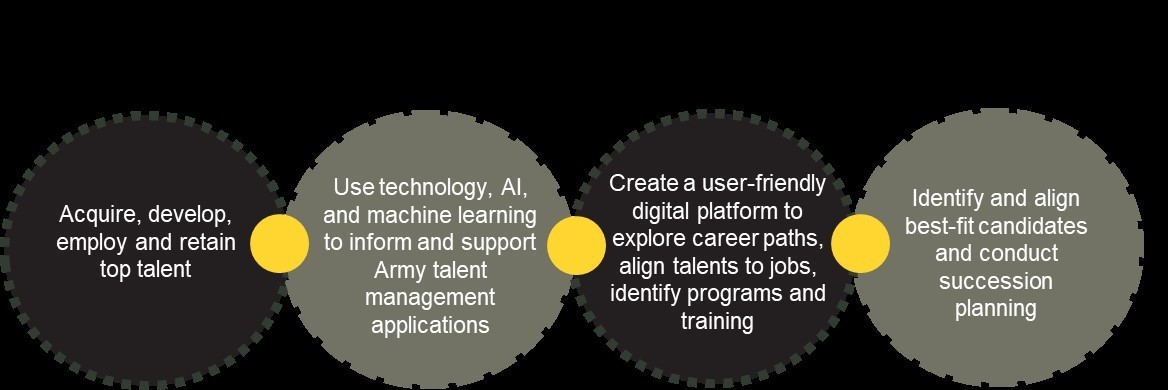
Key questions should be asked to evaluate performance levels, KPIs, and role responsibilities. The process involves:
- Pinpointing business goals.
- Reviewing current performance.
- Identifying gaps.
- Developing a training plan.
For more detailed steps, refer to TrainingFolks.
Engaging Stakeholders for Talent Development Input
Involving the right stakeholders—such as leaders, managers, and subject matter experts—is essential for conducting a robust assessment. Their perspectives enhance the accuracy of the needs assessment.
Stakeholders can participate by:
- Participating in Interviews: Providing insights through direct conversations.
- Joining Focus Groups: Engaging in discussions to share perspectives.
- Completing Surveys: Offering input on specific areas of interest.
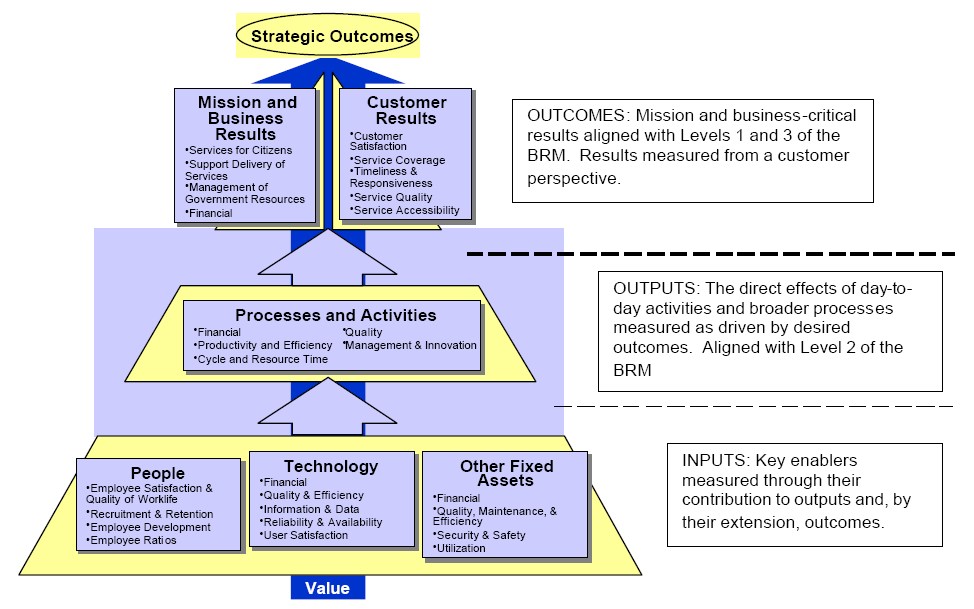
Clear communication about the purpose and objectives of the assessment ensures alignment among all parties. As highlighted by AIHR, stakeholder insights are crucial when balancing goals with limited resources.
Designing Personalized Learning and Development Plans for a Talent Development Framework
Crafting Individualized Learning Paths for Talent Growth
Creating personalized learning paths involves tailoring education to fit each employee's unique needs and preferences. By combining various methods such as eLearning, workshops, coaching, and on-the-job training, organizations can facilitate skill development in a structured and progressive manner.
This approach can boost productivity by up to 70% by enhancing engagement and motivation. AI-powered Learning Experience Platforms (LXPs) simplify the delivery of personalized learning on a large scale. They analyze roles, skill gaps, and career goals to suggest tailored content playlists.
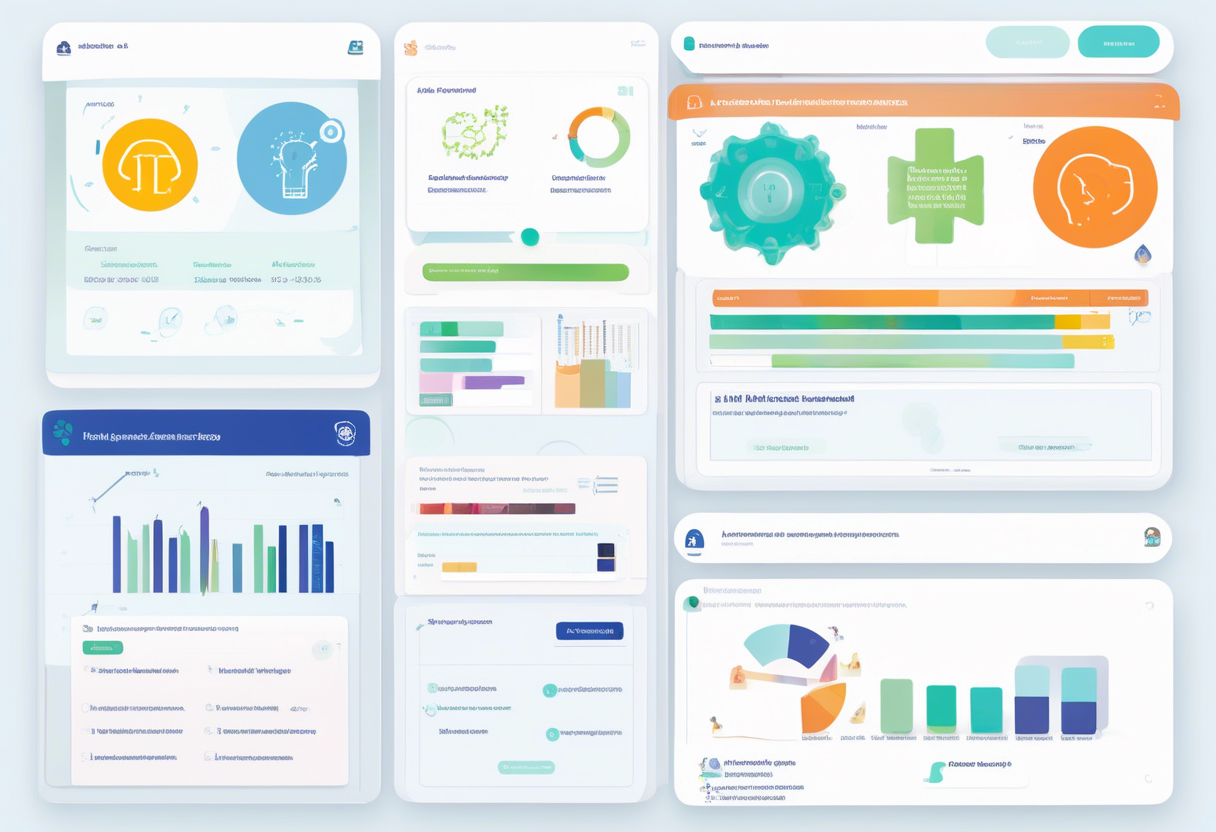
Key strategies include:
- Regular career talks: Engage employees in discussions about their career aspirations.
- Quarterly check-ins: Use quarterly check-ins to set goals and track progress.
- Goal setting and progress tracking: Establish clear opportunities for growth.
With a clear career progression path, employees can take charge of their development by setting specific goals and understanding the skills needed to advance.
Incorporating Continuous Learning Opportunities in Talent Development
Continuous learning is enhanced by AI-driven platforms that adapt content to fit individual roles and learning styles, offering development opportunities beyond traditional training methods. Transitioning from conventional, top-down training to an open learning environment empowers employees to take control of their growth, supported by organizational resources and technology.
Essential tools include:
- Learning management systems: Facilitate program management and content delivery.
- Mentoring platforms: Support personal development through guided mentorship.
- Performance management software: Provide data-driven insights to refine learning outcomes.
Regular reviews, skill checks, and structured feedback are crucial to maintaining relevant learning plans aligned with evolving employee needs and business goals. As automation increasingly handles routine tasks, continuous learning should emphasize developing uniquely human skills like strategic thinking, creative problem-solving, and empathetic leadership.
Step-by-Step Implementation of the Talent Development Framework
Secure Leadership Buy-in for Talent Development
Getting leadership on board is crucial for a solid talent development plan. Leaders must be committed to aligning and integrating the organization. Involving key players like leaders, managers, and employees early helps secure their support and gather valuable feedback. Clear communication about the benefits of talent development is essential for building backing at all levels.
For instance, a US tech company engaged senior leaders and middle managers early, demonstrating how talent development boosts team performance, leading to strong support.
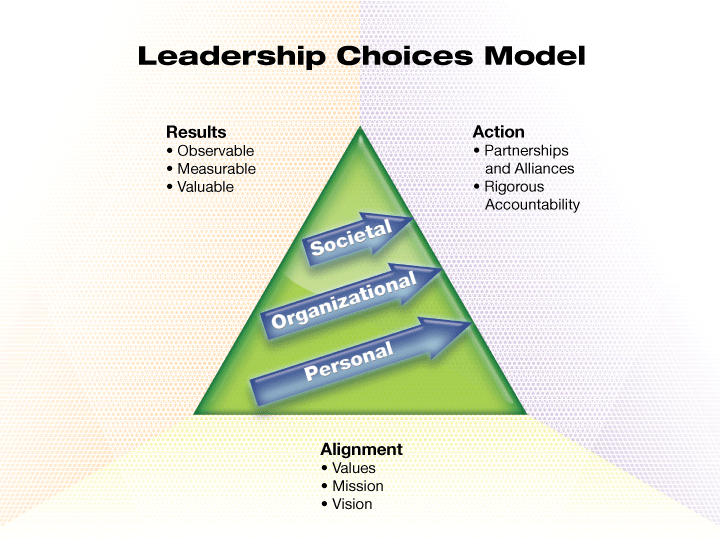
More on leadership buy-in is here.
Conduct Comprehensive Organizational Needs Analysis
A thorough needs analysis is essential to identify current and future talent development needs. This involves assessing current skills and future requirements through performance reviews, skills assessments, and manager feedback. Understanding long-term goals and values is also vital.
Conducting a formal needs analysis and engaging stakeholders helps align talent goals with organizational objectives. Monitoring external talent trends and market competition ensures the framework meets industry changes.
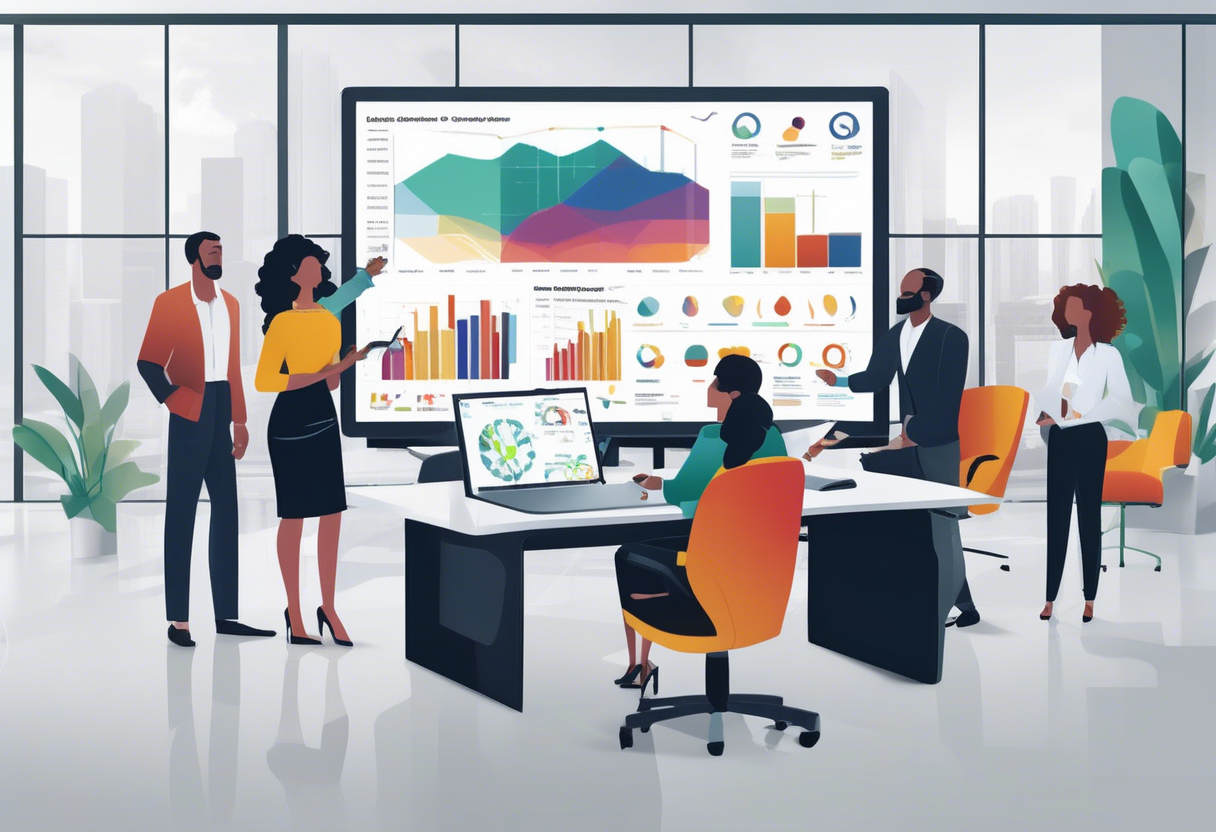
More on needs analysis is here.
Define Mission, Vision, and Values for Talent Development
Setting a clear talent management philosophy guides performance, recognition, and development management. A strong philosophy ensures fairness and reduces bias in talent decisions.
For example, an American healthcare group defined its mission by focusing on transparency, empowerment, and learning aligned with core values, providing clear direction and supporting development at all levels. More on defining mission, vision, and values is here.
Review the Employee Lifecycle for Talent Integration
Examining the entire employee lifecycle is crucial for integrating talent development into every phase. This involves reviewing all stages, from onboarding to succession planning, to ensure growth opportunities.
Identifying high-potential employees using performance data and leadership assessments is key to building a strong leadership pipeline. More on reviewing the lifecycle is here.
Design an Effective Talent Development Framework
Specify Development Philosophy and Structure
Your development philosophy and structure should align with your goals and talent management principles. Decide if the focus is on formal training, experiential learning, mentorship, or a combination. The structure should outline roles and responsibilities for HR, managers, and employees, and be flexible to adapt to changing needs. More on development philosophy and structure is here.
Outline Learning Programs and Growth Activities
Identifying programs and activities for learning and growth is crucial. This could include workshops, coaching, mentoring, and cross-functional projects. Offering a mix of mandatory and elective options caters to diverse learning styles.
For instance, a US retail chain created a framework with blended learning modules and mentoring, supported by HR tech and dedicated staff. More on outlining programs is here.
Identify Essential Resources for Talent Development
Knowing the resources needed for your talent development framework is key. This includes budgeting for programs, tech investments, and partnerships. Identify tech tools to support learning, like LMS, VR platforms, and collaboration tools, and assess the personnel needed for program management and delivery. More on identifying resources is here.
Establish Metrics for Evaluating Framework Effectiveness
Set up metrics and measurement methods to gauge the effectiveness of your talent development framework. Use KPIs, feedback loops, and progress tracking for evaluation and improvement. Regular evaluations help track progress and identify areas for enhancement. More on metrics and measurement is here.
Leverage HR Technology Solutions for Talent Development
Utilizing HR tech solutions is key to streamlining your talent development framework. HR tech facilitates training delivery, progress tracking, and performance management. It reduces administrative work and enables data-driven decisions for talent development.
For example, a US software company used an integrated HR platform for personalized learning paths and real-time analytics. More on HR tech solutions is here.
Build a Strategic Implementation Plan
Crafting a detailed implementation plan guides the rollout of your talent development framework. Develop a roadmap with timelines, responsibilities, resources, and communication strategies. Focus on key initiatives first and expand gradually.
For instance, a US non-profit started with leadership development pilots before scaling organization-wide. More on implementation plans is here.
Pilot and Roll Out the Talent Development Framework
Running pilot programs is crucial to test parts of the framework, gather feedback, and refine before full rollout. Use pilot results to adjust design, resources, and communication for better adoption.
For example, a US healthcare provider tested a mentoring program with select departments and improved it before wider deployment. More on piloting and rolling out is here.
Train Managers and Support Employee Development
Ongoing training for managers ensures fair and consistent talent development. Equip managers with skills and knowledge to support their teams. Support employees with resources and guidance for full engagement in development activities.
For example, a US logistics firm held coaching workshops for managers and provided online learning for employees. More on training and support is here.
Monitor, Measure, and Continuously Improve Framework
Establish a system for ongoing monitoring and evaluation of your talent development framework. Regularly track progress with KPIs, surveys, and performance data to assess effectiveness. Use feedback loops to identify improvement areas and adapt programs. Celebrate successes to boost morale and demonstrate the value of development.
For example, a US manufacturing company held quarterly reviews of metrics and recognized top performers in meetings. More on continuous improvement is here.
Securing Ongoing Leadership Commitment
Maintaining leadership commitment is key for sustaining momentum and resource support. Regularly share successes and impacts of the talent development framework to reinforce commitment. Share data and stories highlighting positive outcomes.
For example, a US energy company maintained executive sponsorship through updates and demonstrated program impact on business outcomes. More on leadership commitment is here.
Leveraging HR Technology for Framework Implementation
Maximizing HR technology enhances the implementation of your talent development framework. HR tech supports scalable delivery, progress monitoring, and data analytics. Automating tasks like enrollment, tracking, and reporting reduces the load on HR staff.
For example, a US financial institution used HR software for automated learning assignments and leadership review dashboards. More on HR tech for implementation is here.
Facilitating Career Growth and Internal Mobility
Design your talent development framework to support internal mobility and career growth. Link talent development with internal mobility programs to provide clear career paths. Use succession planning and leadership development to prepare high-potential employees for advancement.
For example, a US tech firm connected its framework with internal job postings and leadership tracks to boost retention and growth. More on internal mobility and career advancement is here.
Measuring and Optimizing the Talent Development Framework
Setting KPIs for Talent Development Success
Setting up KPIs for each part of your talent development plan is crucial for assessing its effectiveness. These KPIs should align with your organization's goals, encompassing areas such as employee growth, performance management, and turnover rates.
Consider the TMI-Enterprise Talent Management Standards (TMI-ETMS™) framework, which includes around 100 key metrics across 14 strategic areas to comprehensively evaluate talent management performance. Utilizing standardized assessments and frameworks, like those suggested by Korn Ferry, ensures clear and consistent evaluation. This approach aids in accurately measuring KPIs and planning for leadership development. Additionally, implementing such standardized programs can enhance decision-making and reduce administrative costs.
Leveraging Continuous Feedback for Talent Development
Regular feedback from employees regarding their experiences with the talent development framework is essential for identifying areas for improvement. Continuous evaluation methods, such as Phillips' five-level evaluation, provide a comprehensive view of the value of talent development initiatives.
Fostering a culture of ongoing learning encourages employees to seek growth opportunities. Incorporating real-time skills data and scenario-based assessments helps verify job readiness and increases the return on training investments. Organizations that embrace continuous feedback and multi-level evaluation frameworks effectively align learning efforts with tangible business impacts and improved employee engagement.
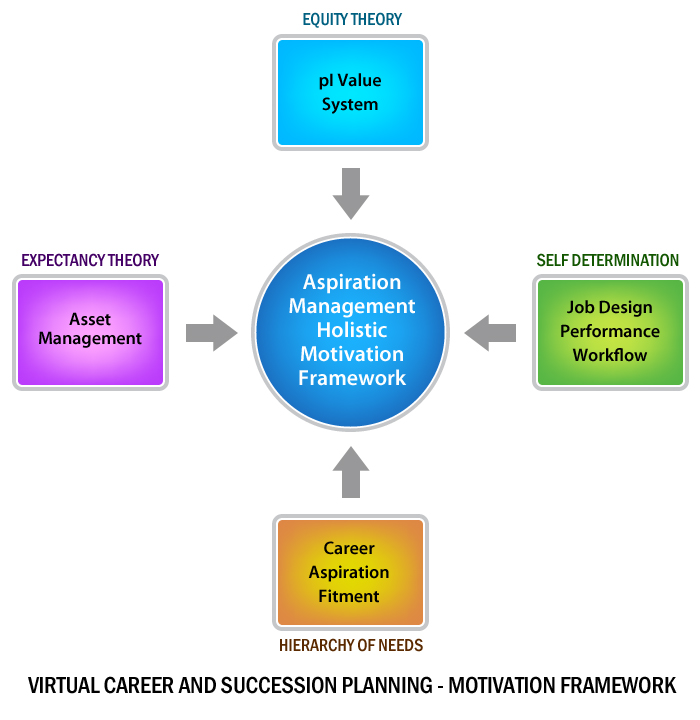
FAQ Section
How to Gain Leadership Support for a Talent Development Framework
Getting leadership on board is crucial for a talent development framework to succeed. HR departments can't do it alone. It's important to involve key stakeholders—leaders, managers, and employees—early in the process to gain their support and input.
Involving senior executives and department heads in initial discussions and planning ensures that the talent framework aligns with business goals and secures their backing. Demonstrating how the talent strategy connects to strategic objectives can be a decisive factor.

For more insights, check out the AIHR blog on talent management frameworks.
Best Practices to Identify Organizational Needs and Skills Gaps
Conducting a formal needs analysis is essential to align talent management with the organization's long-term goals and values. Engaging with various stakeholders across the company provides a comprehensive understanding of needs and deficiencies.
Utilize data-driven methods such as performance management systems that incorporate regular reviews, feedback, and key performance indicators (KPIs) to assess employee performance and identify gaps.
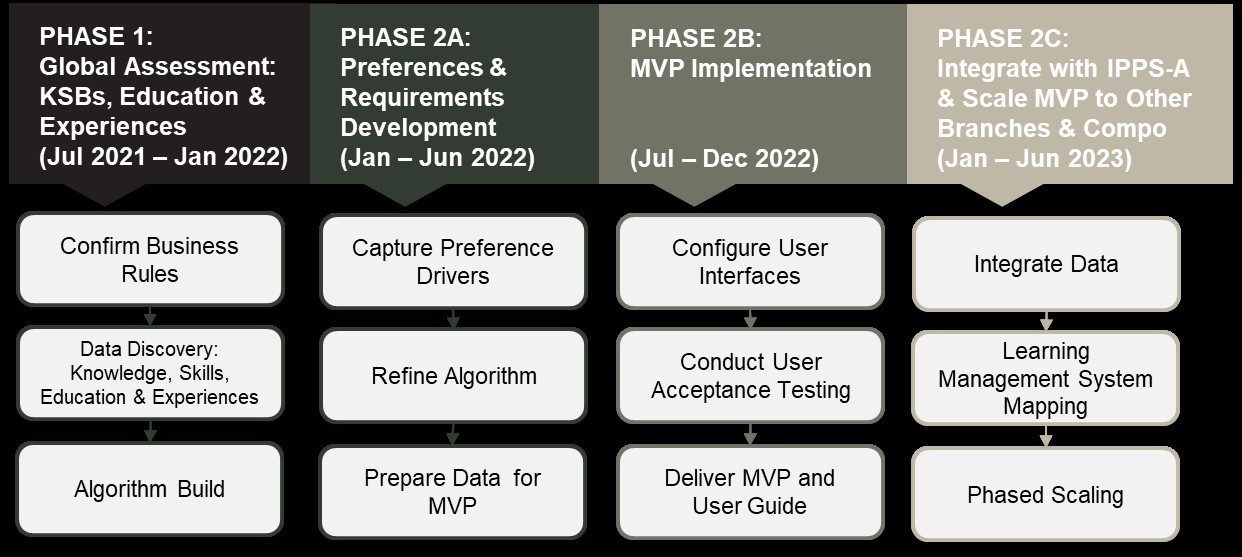
Combine company-wide surveys and interviews with performance data to pinpoint key skills shortages and development needs. Learn more about these methods here.
Implementing Effective Personalized Learning and Development Plans
Personalized learning plans must align with identified skills gaps and organizational goals to be effective and impactful. Increasingly, organizations are adopting professional training programs, mentorship initiatives, and e-learning platforms to equip employees with necessary skills and promote continuous learning.
Flexible and adaptable workforce systems, featuring rapid feedback loops between employers, educators, and training providers, ensure that learning programs evolve in response to economic changes. For a deeper understanding, visit America's Talent Strategy.